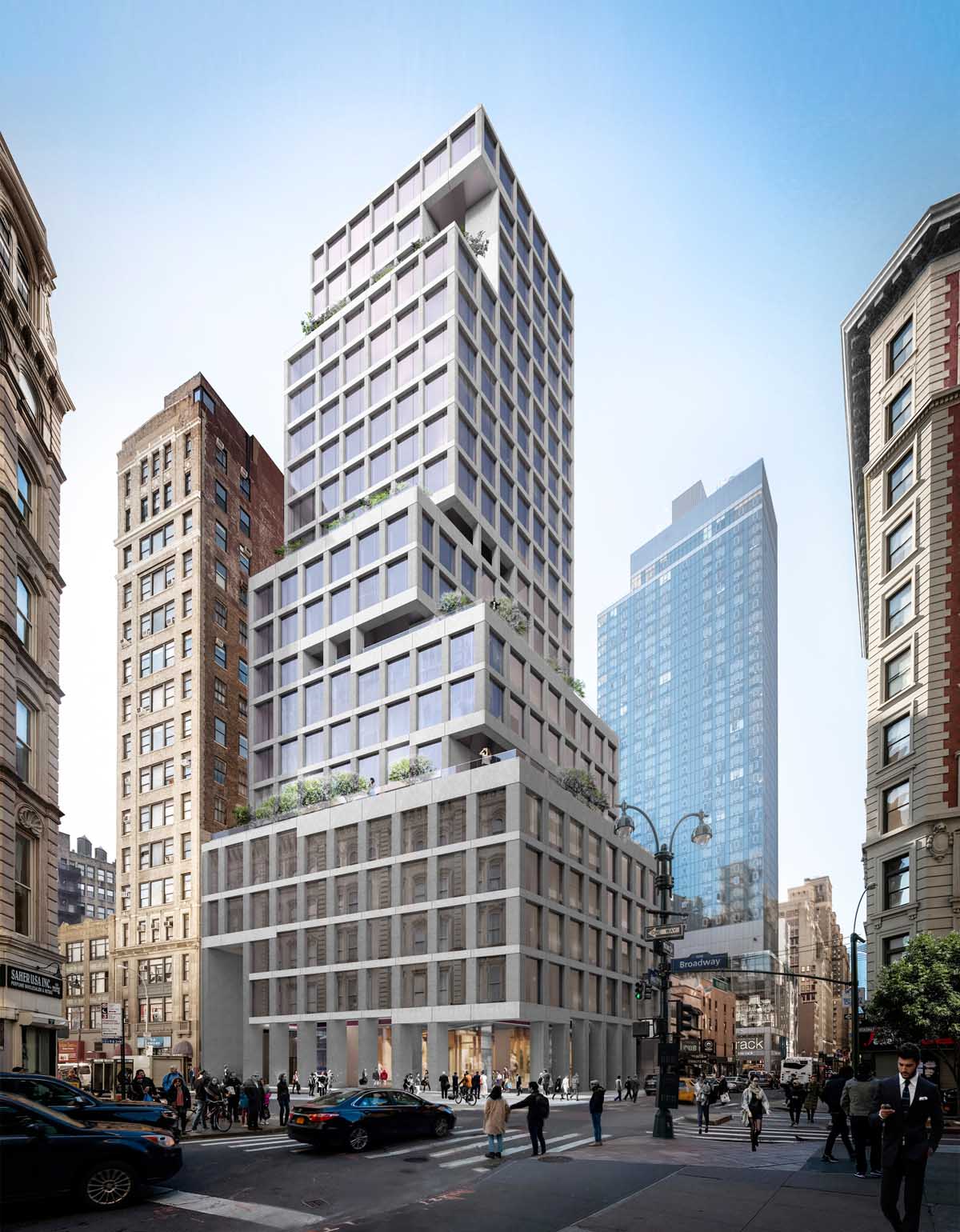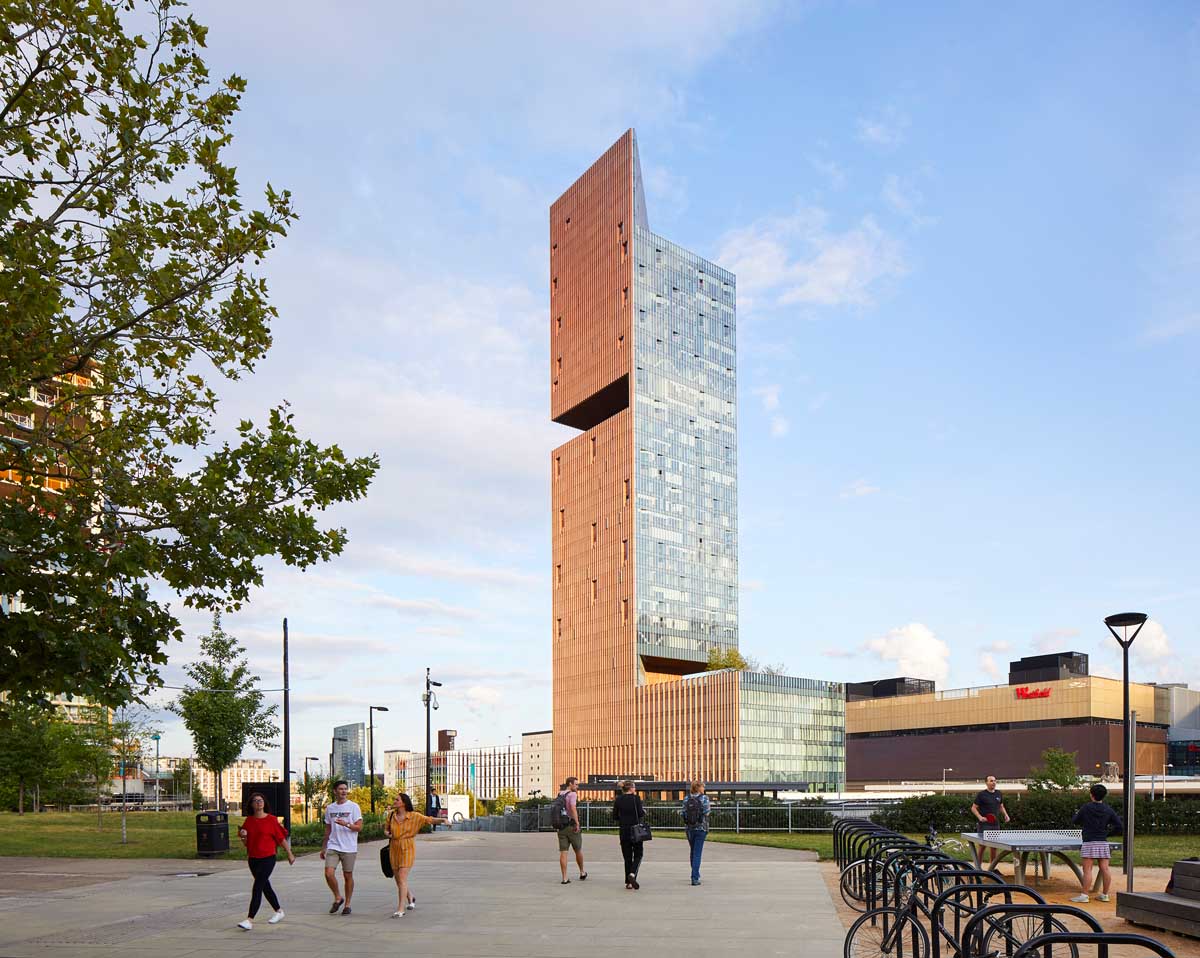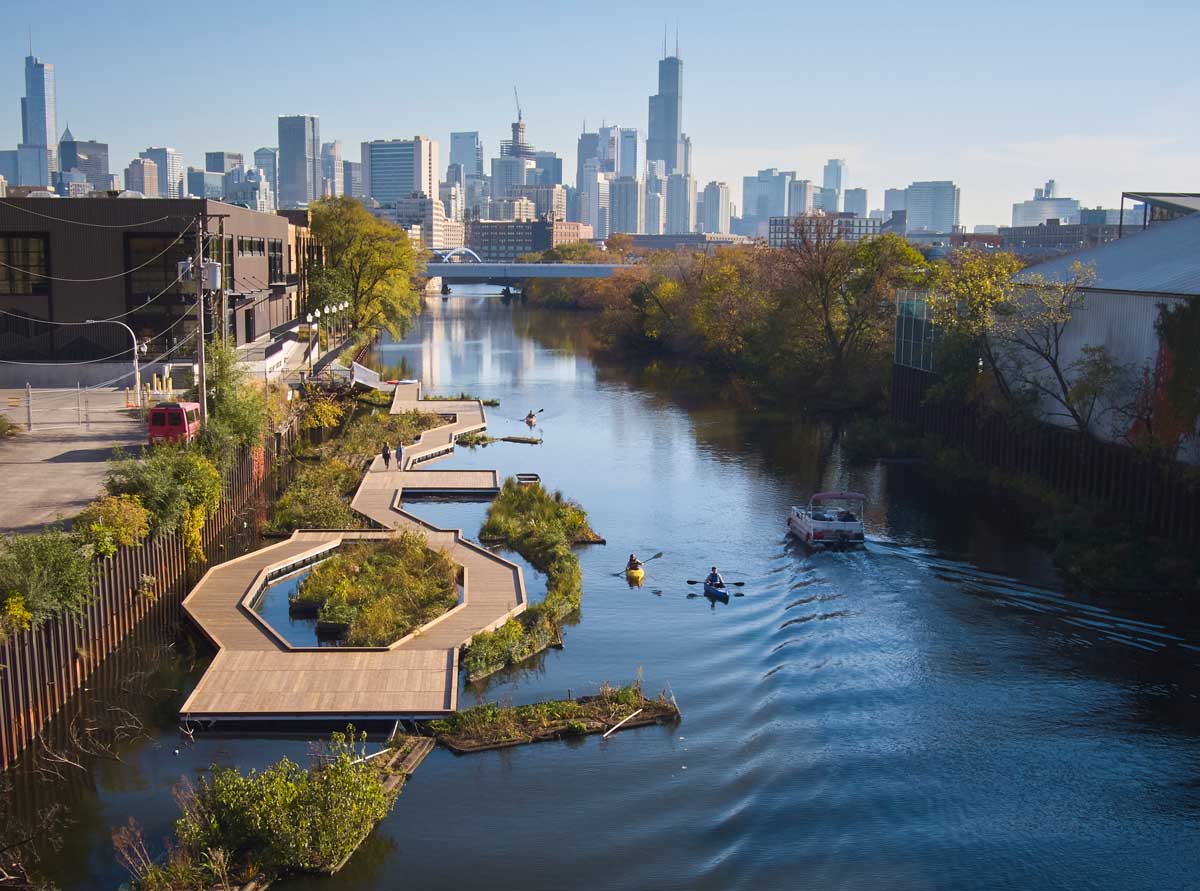Photo: Wild Mile – Skidmore, Owings & Merrill (SOM)
It’s been a year of climate extremes – record breaking in every way – rainfall, heat, bush-fires and cold… So, with the world seemingly on the tipping point of climate disaster, is it time for the connected industries of architecture and construction to step up and play their part in the reduction of use of carbon?
Industry insider spoke to leading New York-based architect Olin McKenzie from Skidmore, Owings & Merrill (SOM) about what’s changing in architecture post-pandemic, and an energized focus on the environment.
Olin McKenzie has the pleasure of working on some of the world’s great construction projects and despite disruptions of the past three years, can report that the practice is busy, and returning to normal.
“I think a lot of people, appropriately, were biding their time to see what cultural changes would be durable, so that they didn’t rush to put something out on the market that maybe didn’t line up with the way people would exit the pandemic,” he says.
“But things are definitely getting back up to speed again now.”
So, what has changed, if anything, since the resurgence?
Carbon Crisis
McKenzie says that there are a number of trends that were brewing, but these were then supercharged by the pandemic – among these things like the demand for increased access to outdoors, facilitating flexible work schedules, reducing waste and improving operational efficiency.
But most important, he says, the conversation with sustainability moved to an increased focus on carbon.
“For a long time in architecture, the focus was really on operational energy, and so there are all these technologies and strategies to try to reduce things like plug loads in buildings, and cooling and heating loads.
“But I think there’s a strong realization once you start to look at embodied carbon. An example: you’re doing an all-glass building, and then putting aluminium fins on the outside of it to block sun from going in, then you’re potentially exacerbating the problem. And in the process of doing that, spending a lot of carbon. We focus on avoiding scenarios like this” McKenzie says.
“Materials like aluminium are sourced from raw materials, refined, manufactured, transported, and ultimately installed. In the course of this, a significant amount of CO2 was released into the atmosphere through production.
“And all of that adds up to the building’s carbon footprint,” he says.
Although it’s not maybe as sexy or as visible a PR target for sustainability, in some ways McKenzie says the most impact that you could have on carbon in architecture could be optimizing the superstructure of a building.
“Once you start studying the embodied carbon in a new building, you realize that something to the order of 35%-45% of the embodied carbon of a building actually exists within the superstructure – the core, the columns, and the floor plates.
“At SOM, we’re lucky to have a brilliant structural engineering group and much of our time was already spent synthesizing architecture and structures. Now, we’re dually motivated to work with that team to really optimize the material structure of a building and endeavour to do more with less,” he says.
“Now, suddenly we have tools to evaluate the designs that we’re doing and the buildings that we’re building in a way that speaks holistically about CO2 emitted, as opposed to simply looking at when a building is complete and analysing how it will perform from an operational perspective,” he says.
Less Glass
Aluminium fins or not, that external structure of the building has a huge part to play in both the building’s embodied carbon, and operational carbon use over time.
For SOM, that means increased use of triple glazing and utilising the sophisticated pallet of coatings that now exist for improved thermal performance. But ultimately it means less all-glass buildings.
“Generally speaking, we’re moving away from the all-glass building as we seek to address climate change.
“The glass tower was a badge of pride for a certain type of progress for cities, or economic achievement or stability. That is a stereotype that we need to help erode—we are driving our clients and our designs towards other, more sustainable building enclosures.
“We’ve had very positive reception in the developer and building owner community. We’re getting a lot of traction when we say “No, we don’t want to do an all-glass building”. That’s quite a good sign,” he says.
 Photo: 1245 Broadway – Skidmore, Owings & Merrill (SOM)
Photo: 1245 Broadway – Skidmore, Owings & Merrill (SOM)
So, how to replace the ubiquitous glass curtain-wall building systems that offer such efficiency of construction, without just adding more embodied carbon in additional cladding or concrete?
“In New York and in other places we’ve seen a real uptick in the use of terracotta, which is effectively like a 2000-year-old technology. It’s mud, right? The assemblies involve essentially extruded earth and straightforward fastening componentry, but they’re beautiful and high-performing and the technologies of achieving different finishes on them has come a long way.
“So, we’re using that on a lot of projects, as are a lot of other architects. It’s a really great material in terms of both initial carbon footprint, and it can be recycled.
But what about removing the cladding altogether?
McKenzie refers to a current project, a medium-scaled boutique office building by SOM along with development group GDSNY on Broadway and 31st Street in New York City.
“One of the great things about that building is that it’s an architecturally exposed concrete building. It’s not all glass, it’s effectively a frame and infill building with big, beautiful, glazed bay windows. And that celebrates the idea of framing views as opposed to an all-glass building that’s just views everywhere.
“For us, one of the motivators was to try to take things off a building – to de-laminate the building.
“In New York, you would typically clad a building in something. In this project, the structure is effectively also the skin of the building. This was an experiment for us in a sense there’s a lot being done now to make concrete a material that is more carbon friendly.
“There’s carbon capture concrete where they’re actually baking CO2 that’s in the atmosphere, and capturing it in concrete pores. And there’s glass products that are being crushed and put into concrete, all of which I think points towards a future where we’ll see more of that. But that was a beginning for us.
“That building also has triple glazing, which in that particular project, the wall became so efficient from a heating perspective that it allowed us to get rid of perimeter heating, which is something you see in New York. So, that was a great environmental win for that project,” he says.
McKenzie believes that one of the biggest challenges for construction right now is aluminium.
“Today, aluminium requires a hefty amount of carbon to be expended in its manufacturing. As a result, we’re calculating how to reduce the amount of aluminium in our buildings.
“So, that’s a noble effort. I think there are others too, but we have these great tools now where we can track actual quantities of stuff that’s in the building, so that, in theory, there’s not really an excuse to throw your hands up and say, “oh, well, we didn’t understand completely, the impact of what we were doing”.
“That may have been true a couple decades ago, but that’s not true anymore. We have the tools now.
“So, I think we’ve entered an era of accountability, or at least, you can be held accountable for what you’re doing. Whether or not people engage with that accountability is a different story,” he said.
Fresh Air
Sometimes these low carbon ambitions compete with each other, however. And McKenzie talks about the post pandemic move to make buildings more open to the outdoors, with increased ventilation, and the resulting impact that has in terms of airflow and air control systems in buildings.
“If you look at office buildings for the last 30 years, there’s been a technical march towards sealing buildings off, trying to get a membrane on a building that bled as few BTUs as possible – really the most efficient sweater you could put on a building. But now, all of a sudden it’s like, “oh, but wait, we want access to the outdoors as well!”.
“And that is a great and very human motivation, but operable windows historically are places where thermal exchange performs worse, even when they’re closed, so what does that mean to the HVAC systems?” McKenzie asks.
“The reality is that the HVAC systems now, and the filtration systems are such that you can have as good, or better fresh air in a building without operable windows.”

Photo: Manhattan Loft Gardens – Skidmore, Owings & Merrill (SOM)
McKenzie says in SOM’s own offices on the 27th and 28th floor of the building near the World Trade Center site, they have CO2 and oxygen sensors that provide air quality reports in real-time.
“It’s a sealed building – there are no operable windows. But the amount of fresh air we can introduce into the interior, and how many times per hour you can change the air over is such that, the air quality in our office is better than the air quality of me walking down the sidewalk in New York City,” he says.
“So, it’s maybe a little bit of a false premise to say that opening the windows is always the best thing for us air-wise.
“I think there’s also just a psychological desire to open the windows and be outside. And that is a motivation that we’re really excited about, and one that we’re meeting in a lot of projects. But there’s a lot of inputs and there’s not one-size-fits-all at the moment,” he says.
Silver Linings
And, while access to outdoors does seem to be frankly ubiquitous, certainly in New York City, McKenzie says he’s hearing a chorus of commercial tenants saying the more outdoor space they can have in their offices, the better.
“There’s a large-scale commercial office project that we’re working on in New York that is really, in some ways, being driven by access to outdoors and this notion that a large amount of tenants will have access to really meaningful outdoor spaces.
“So, it’s cool. I do think a lot of the things aren’t just being talked about, they’re actually part of what we’re seeing in the market now. And if developers are wanting it, it means that it’s being demanded in the market. That’s a pretty reliable bellwether, I think.
So, is the future bright for sustainable architecture? And has the pandemic done humanity a favour but reminding us of our connection to nature?
“I like to think that maybe one silver lining of what was a very difficult, and for many people, a harrowing three years, is that people are more sensitive or aware and compelled to action around sustainability and climate change.
“Hopefully, there was a good dose of humility with what happened. There’s this overbearing confidence that I think has fuelled our dis-associative relationship with the natural world and systems of the natural world.
“Maybe this will help correct the course a little bit. There’s still plenty to be concerned about. But, yeah, I’m a diehard optimist, So, I like to think that maybe this helped a little bit!”

